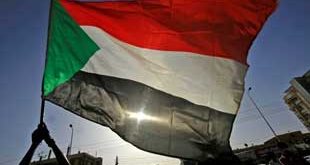
By Agnes Asiimwe
Five heads of state, ministers and delegates from across the African continent met in Kampala last week for a special summit to deal with forced displacement in Africa. The meeting was convened to forge a way to avoid mass and forced displacement on a continent that already has 26 million internally displaced people, that is, people living like refugees in their own countries.
Millions of people in countries like Chad, the DRC, Kenya, Somalia and Sudan are displaced due to conflict and natural disasters. According to UNHCR, Kenya has 30 transit sites hosting 35,000 IDPs.
Uganda’s problem of IDPs is longstanding with displacement in the north and north-eastern parts of the country because of the LRA insurgency. “Uganda after defeating the LRA has successfully resettled 2.1 million IDPs, the remaining 413,000 IDPs are gradually returning home on a voluntary basis,†said Prime Minister Apolo Nsibambi at the summit. At one time Uganda had 1.8 million IDPs, said President Museveni, “Soon all IDP camps will be no more.â€

John Holmes, United Nations Under-Secretary General for Humanitarian Affairs and Emergency Relief Coordinator visited Pader district on October 21, a day before the summit, to witness first hand the challenges faced by IDPs and noted that the 15 per cent remaining in camps are widows, the elderly, the disabled, child-headed households and HIV/AIDS patients. “We must do more to help them too regain an independent life outside the camp,†said Holmes.
Whereas people who feel persecution or conflict and cross into another country are categorised as refugees and, as such, benefit from a longstanding international legal protection system, internally displaced people are not recognised by the international legal system even though they are often displaced in the same way as refugees. Trapped in camps, IDPs are in limbo and unable to contribute to development and eventually some get restless.Â
The Kampala summit, described by Zambian President Rupiah Banda as “a distinct successâ€, ended in the adoption and signing of the Convention for the Protection and Assistance of Internally Displaced Persons. The meeting also adopted the Kampala Declaration for a stronger commitment to addressing the challenge of mass displacement. Through the convention, African leaders will commit themselves to protect and provide more assistance to those living like refugees in their own countries. Seventeen countries signed the convention but for the legally binding document to come into force, it has to be ratified by 15 states.
The focus of the conference was especially on IDPs because there are currently 26 million people who are displaced in Africa and still rising and this far exceeds the number of refugees. “Refugee status and internal displacement must not be an inheritance that is handed down from one generation to the next,†said Mr Antonio Guterres, High Commissioner, United Nations High Commissioner for Refugees.
President Yoweri Museveni said the main factor that generates refugees and IDPs in Africa is conflicts. “Conflicts are not the same. Wars are either just or unjust. Just wars are legitimate… Even if it is just, we must look at the methods. Attacking children and women is not part of war. This is what distinguishes a freedom fighter from a terrorist.â€
The African Union (AU) is now in advanced stages of establishing an African Standby Force whose mandate will be anything from assisting people after natural disasters, to peacekeeping, protection of the vulnerable, and implementation of peace agreements. The force made up of soldiers from the national armies of AU member countries will consist of 25,000 soldiers and will be fully operational in June 2010.
Holmes stressed the recognition of natural disasters as causes of displacement. According to him, there are about 700,000 people who have been displaced by natural disasters and climate change like droughts and floods.
However, attendance by heads of state was so poor that observers wondered if some countries were not interested in signing the convention or if the leaders deliberately avoided coming to Uganda. Out of the 46 participating countries, only four had heads of state, that is the presidents of Saharawi Arab Democratic Republic, Somalia, Zimbabwe and Zambia. The rest sent representatives. AU Commission Chairman Dr Jean Ping said it was because there were many other meetings taking place at the same time.Â
“It’s not easy to convene all heads of state. I can assure you that all are concerned and they are all represented by prime ministers, vice presidents and their line ministers. “There is a commitment to participate in this process and that’s what’s important,†said Ms Julia Dolly Joiner, AU Commissioner for Political Affairs.
Be that as it may, human rights activists were celebrating the major steps made in recognising IDPs. “The convention is unique, comprehensive and unequivocal response to the challenges of forced displacement. This instrument clearly demonstrates that African leaders are conscious of the difficulties that displaced persons experience and are poised, to as much as possible put an end to their suffering,†said Ms Joiner.
The Kampala declaration agrees to, among other things, enable IDPs find durable solutions by promoting and creating conducive conditions for voluntary return, local integration or settlement elsewhere in the circumstances of safety and dignity and to ensure access to primary, secondary and post-secondary education, and other training for all children, including refugee and internally displaced children as well as access to informal and adult education by out of school girls and women.Â
The signing of the convention brings to an end the process of negotiation that started in 2006. What remains is the ratification of the agreement after which countries shall respect several obligations relating to the protection and assistance of internally displaced persons and avoid situations driving to forced displacement.
 The Independent Uganda: You get the Truth we Pay the Price
The Independent Uganda: You get the Truth we Pay the Price



